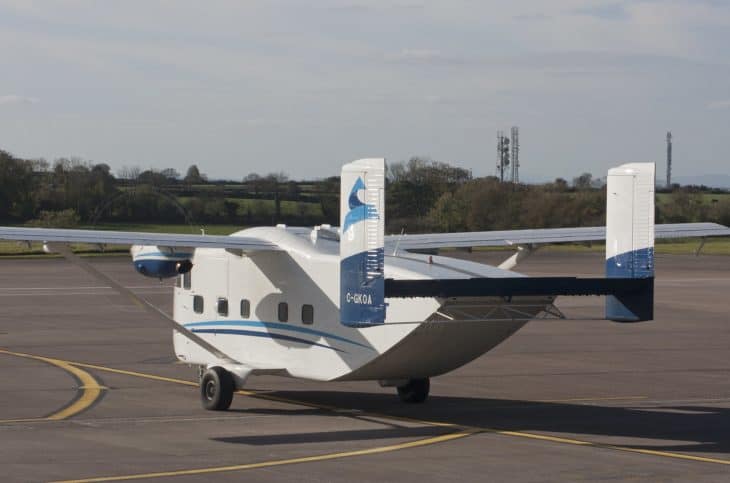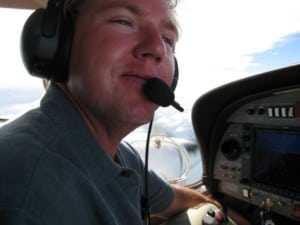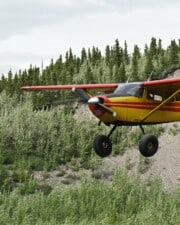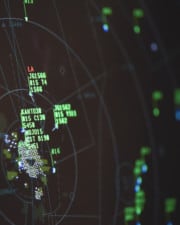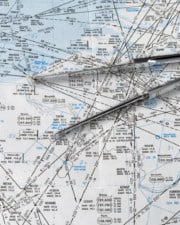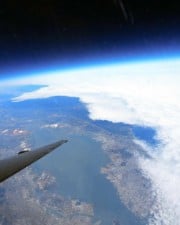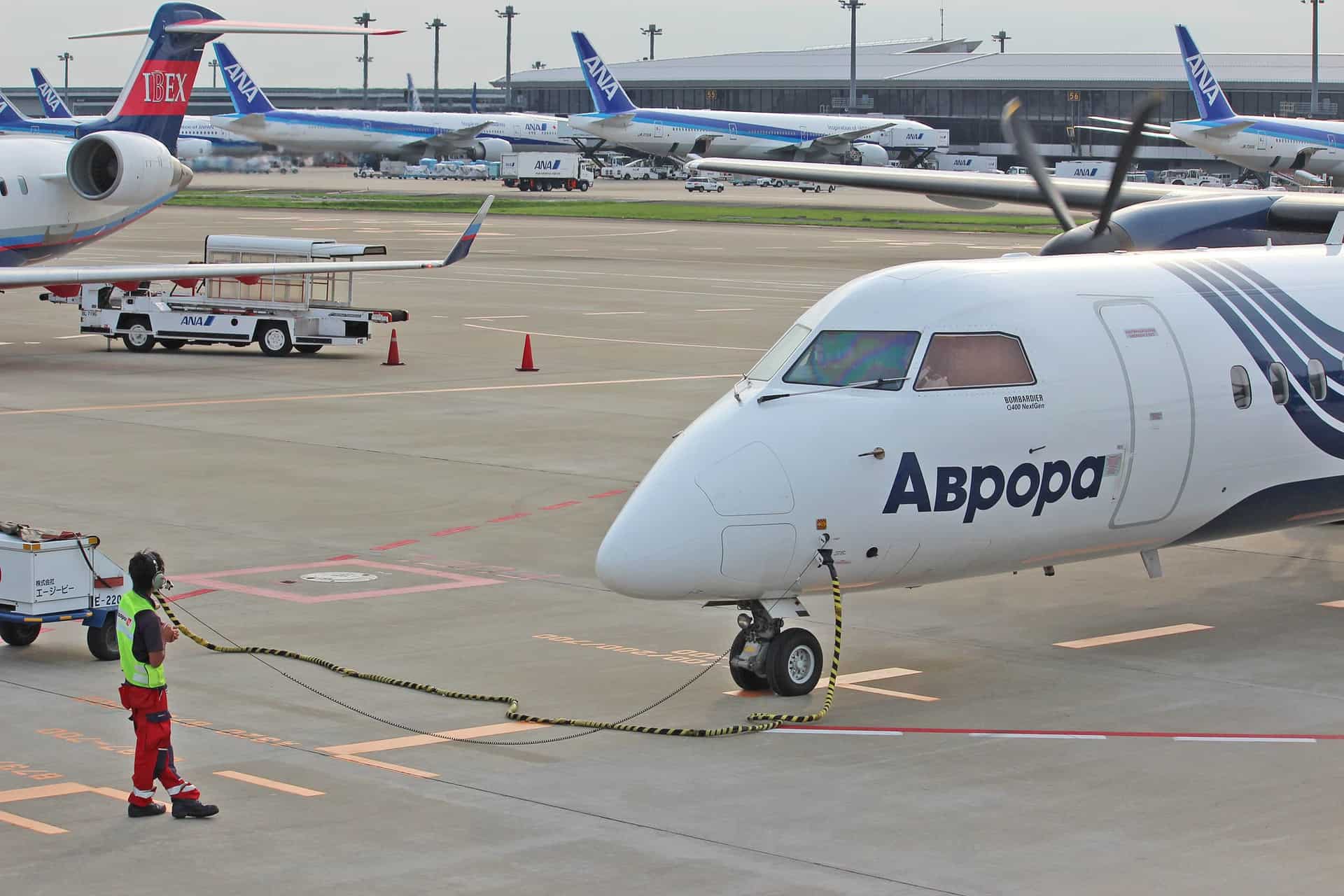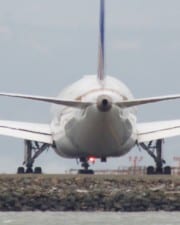The airplane’s flight controls are the moveable control surfaces that the pilot can use to control the plane as it flies through the air. Of the three primary flight controls, the rudder is often the most misunderstood.
Table of Contents
What Does The Rudder Do?
Like all flight controls, the rudder is a mini wing that creates a lifting force in a specific direction. Mounted vertically on the plane’s tail section, the rudder makes a force to the left or right, pulling the nose in the opposite direction.
The rudder is mounted on the vertical stabilizer, part of the empennage at the back of the airplane. It is equivalent to the rudder found on boats or ships–it helps the vessel turn one way or another. A plane, however, moves in three dimensions. That means that its three flight controls work in unison with each other. To turn the aircraft, the pilot uses all three flight controls.
The rudder is controlled in the cockpit by foot pedals. When the pilot presses the left pedal, the rudder deflects to the left. This deflection creates more lifting force on the right-hand side of the rudder, which moves the plane’s nose to the left.
Flight Controls and Their Purposes
There are three primary flight controls found in one form or another on every airplane. They are the elevator, ailerons, and rudder.
The elevator moves the airplane around the lateral axis (wingtip to wingtip), which is called pitch. Pitch moves the nose up and down.
The ailerons move the airplane around the longitudinal axis (nose to tail), a motion called roll.
And finally, the rudder controls the plane around the vertical axis (up and down), which is called yaw. Yaw moves the nose of the aircraft left or right.

In addition to these controls, there are several other types of flight controls. Secondary flight controls include flaps, flaperons, slats, slots, spoilers, and trim tabs. None of these are necessary for flight; they are used to make more lift or to fine-tune the primary flight controls.
The Purpose and Importance of the Rudder
The rudder might be the most misunderstood flight control. When first learning to fly, it becomes evident that the ailerons roll the plane into a turn. Most planes then turn, perhaps not as effective as it should, whether or not rudder inputs are applied.
So what does the rudder do, if its effects are hard to notice? To understand that, you need to understand what makes an airplane turn in the first place.
The force that makes an airplane turn comes from the wings’ lift. When the wings are rolled into a turn, the total lifting force remains perpendicular to the plane’s wingspan. Instead of all of the lift being opposite gravity, as it is in straight flight, some of it is pulling the plane into the turn. That part of the lift is referred to as the horizontal component of lift. It is the horizontal component of lift that makes an airplane turn.
The ailerons, mounted on the wings’ outer trailing edge, roll the plane by creating more and less lift at the wingtips. On the side where more is created, the wing goes up; on the other side, less lift is created, and the wing goes down. When more lift is created, so is more induced drag, which is a byproduct of lift.
Induced drag is always present when you make lift with a wing or a control surface. But with the ailerons, it presents a problem. The wing that goes up as you roll into a turn makes the most induced drag. That means that the wing on the outside of the turn will pull the nose away from the turn. This phenomenon is called adverse yaw.
The rudder is critical on a plane to counteract adverse yaw. By applying some rudder pressure into the turn, the nose continues turning as desired.
There have been some aircraft designs that have combined the rudder and aileron inputs into one pilot control. The rudder pedals are removed and the controls coupled together so that the rudder is actuated with the ailerons. It’s just one idea that designers have played around with to make flying more straightforward and more accessible, but it didn’t catch on. The most famous example of this design is the ERCO Ercoupe.
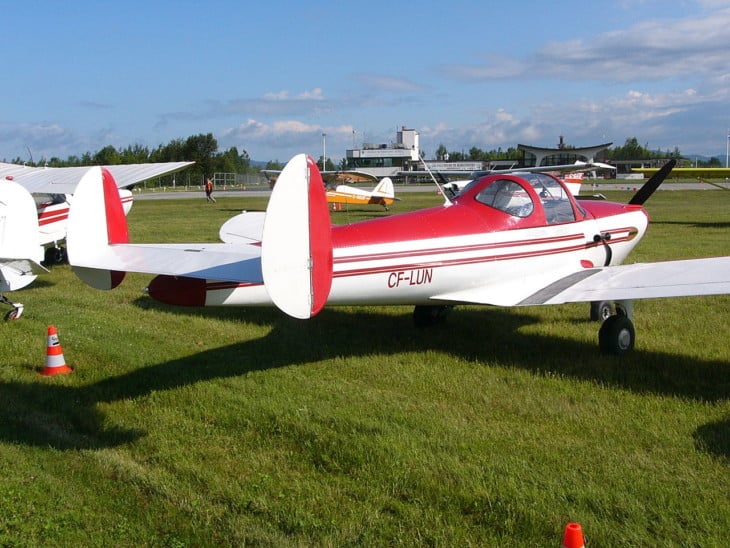
It’s Not Just About Turning
While the rudder is essential to helping control the plane in turns, the rudder does a lot more than that.
Correcting Yaw
Propeller-driven planes are subject to four left-turning tendencies. During cruise flight, the aircraft is designed to make these unnoticeable. But sometimes, like during climbs, these forces combine and will yaw the nose of the plane left. In these cases, the pilot must apply right rudder to keep the aircraft flying straight.
Stall or Spin Recovery
The rudder is also a critical flight control for emergencies like stalls or spins. Ailerons, mounted on the wings, can become ineffective if the wings are stalled. What’s even more dangerous, the ailerons could exacerbate a stall since they cause an imbalance in the amount of lift each wing produces.
The rudder is used to control the airplane’s yaw in these situations. The proper recovery process for a spin scenario is to neutralize the ailerons and to apply rudder in the opposite direction of the turn.
Engine Failure
On twin-engine airplanes, the rudder is the correct way to correct if one engine fails. With one engine inoperative, the asymmetric thrust will pull the aircraft into a turn towards the dead engine. The rudder can counteract this effect and keep the plane flying straight.
Rudder Trim
The rudder can be trimmed to reduce pilot workload. Multi-engine airplanes nearly always have a rudder trim control. In the event of an engine failure, the pilot can adjust the trim to maintain their heading. Depending on the airplane, some planes require a lot of pressure on the pedal. It can wear out a pilot’s leg muscles pretty quickly!
Single-engine planes also sometimes have rudder trims. They come in handy when fine-tuning the aircraft for straight and level flight, especially if the plane has a wide range of airspeeds and configurations.
Many small planes have ground adjustable trim tabs. These are simply small pieces of metal that are mounted on the rudder’s trailing edge. They can be bent slightly on the ground to ensure that the plane flies straight during cruise flight.
Ground Control
Since the rudder moves the plane’s nose left and right, it only makes sense that it would be used to control the aircraft on the ground when taxiing. Remember, when there is no air flowing over them, the flight controls do not work.
To accomplished steering on the ground, the nose wheel moves on tricycle-type landing gear, and the tailwheel moves on conventional landing gear (taildraggers). On most tricycle-geared airplanes, the nose wheel steering is linked to the rudder pedals. So to steer their way around the tarmac, the pilots move their feet. The control wheel remains stationary.

Large airplanes typically have an entirely separate control for steering the nose wheel, called a tiller.
Planes can also use their brakes to help them steer on the ground. The brake pedals are mounted above the rudder pedals, and each pedal controls each brake independently. It’s known as differential braking, and it means that pilot can make a very tight turn on the ground by turning the nose wheel and then tapping the brake on the inside of the turn.
References ▾
Related Posts
